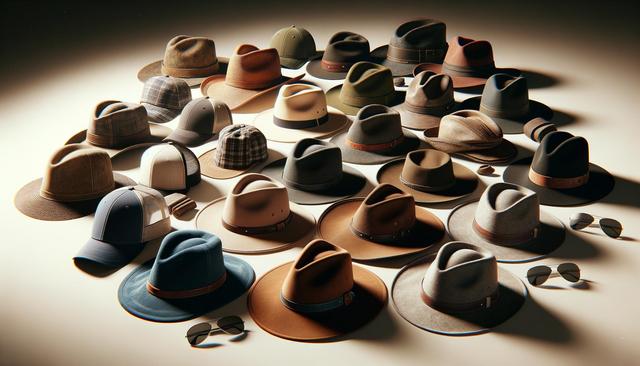A Historical Look at Men’s Headwear
Men’s hats and caps have evolved significantly over the centuries, serving not only as protection from the elements but also as symbols of status, profession, and personality. From the top hats worn by aristocrats in the 19th century to the flat caps favored by working-class men, each style carries a unique story. In earlier times, specific hats indicated one’s role in society—such as bowler hats for bankers or military caps for service members. Over time, these distinctions faded, and headwear became more about fashion and function than formality.
Some notable historical styles include:
- Top hats – a staple of formal wear in the 18th and 19th century.
- Boater hats – popularized in the early 20th century for summer leisure activities.
- Fedora – a versatile choice that became a fashion icon in the mid-20th century.
Understanding the origins of these hats can help modern wearers appreciate their design and cultural significance, making them more than just a wardrobe accessory.
Modern Styles and Their Appeal
Today, men’s hats and caps encompass a wide range of styles that cater to different preferences and lifestyles. Whether for casual outings, formal events, or practical use, there’s a hat for every occasion. Baseball caps, for instance, have become a global staple, valued for their simplicity and comfort. On the other hand, styles like the trilby or pork pie hat are often chosen for their refined look and retro charm.
Popular contemporary styles include:
- Baseball caps – ideal for everyday casual wear.
- Snapbacks – known for their adjustable fit and urban style appeal.
- Beanies – suitable for colder weather and relaxed environments.
- Panama hats – lightweight and perfect for summer outings.
These styles often blend traditional elements with modern materials and design updates, making them accessible and appealing to a broad audience.
Choosing the Right Hat for Your Face Shape
Finding a well-fitting hat involves more than just selecting a favorite style—it should complement your face shape for a balanced look. Different hat shapes can either enhance or detract from your natural features. For instance, men with round faces benefit from hats with height, like a fedora, while those with angular faces might prefer softer lines, such as those of a flat cap or beanie.
Here are some general guidelines to match hats with face shapes:
- Round face – go for structured hats like fedoras or trilbies.
- Square face – choose rounded styles like bowler hats or wide-brimmed hats.
- Oval face – most styles suit this versatile shape.
- Long face – opt for hats with wider brims to create balance.
Taking time to try different styles and considering proportions can significantly enhance how a hat complements your look.
Materials and Seasonal Considerations
The material of a hat greatly influences its comfort, appearance, and suitability for different weather conditions. Wool and felt hats are ideal for fall and winter, offering warmth and durability. Straw and cotton hats, on the other hand, are better suited for spring and summer due to their breathability and lightweight nature.
Common materials and their seasonality:
- Wool – warm and insulating, great for cold months.
- Felt – versatile and stylish, suitable for formal or casual wear.
- Straw – breathable and lightweight, perfect for hot days.
- Cotton – soft and comfortable, often used in casual caps and beanies.
Choosing the right material ensures that your hat not only looks good but also feels appropriate for the season, enhancing both function and fashion.
How to Care for Your Hats and Caps
Proper care can significantly extend the life of your hats and caps. Different materials require specific maintenance routines to keep them looking their best. For example, felt and wool hats should be brushed regularly to remove dust, while straw hats benefit from gentle cleaning with a damp cloth. Caps made of cotton or synthetic materials can often be spot cleaned or hand washed, depending on the manufacturer’s instructions.
Here are some general care tips:
- Avoid leaving hats in direct sunlight for extended periods to prevent fading.
- Store hats on a shelf or in a box to maintain their shape.
- Use a hat form or stand for structured styles like fedoras and trilbies.
- For caps, allow them to air dry naturally after cleaning.
With the right care, your favorite hat can remain a staple in your wardrobe for many years, retaining both its shape and appeal.
Conclusion: A Timeless Accessory for Every Man
Exploring the world of men’s hats and caps reveals a rich blend of history, style, and practicality. Whether you’re looking to make a fashion statement, protect yourself from the elements, or simply add a personal touch to your outfit, there’s a headwear option to suit your needs. By understanding different styles, choosing the right fit, and caring for your hats properly, you can enjoy this timeless accessory as a functional and fashionable part of your daily life.






